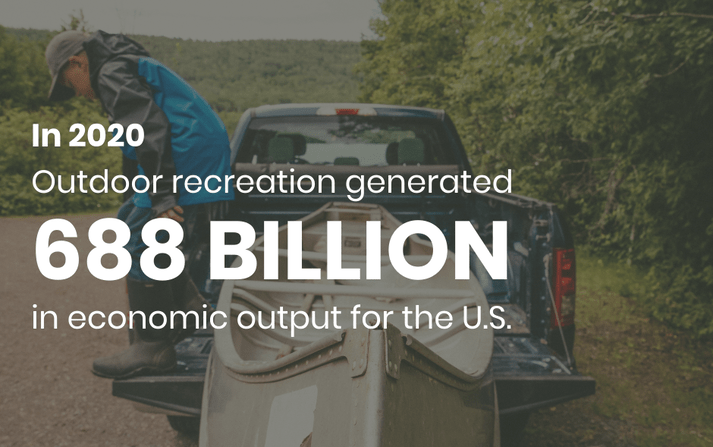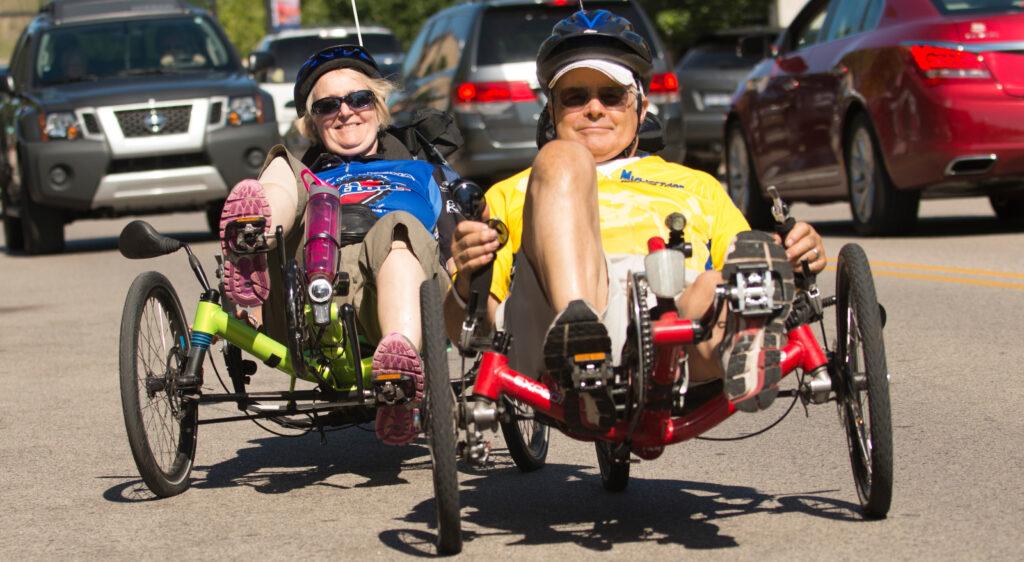
Outdoor Recreation Generated $688 Billion in Economic Output
November 11, 2021
This week, the U.S. Bureau of Economic Analysis (BEA) released new data showing the economic impact of outdoor recreation in 2020. This analysis demonstrates outdoor recreation’s powerful and positive economic impact on the U.S. economy during a difficult and uncertain year defined by the pandemic which led to restrictions and closures.
Despite the challenges, the BEA found outdoor recreation accounted for $688 billion in gross output (consumer spending) and 1.8 percent ($374 billion) of gross domestic product (GDP) in 2020.
As outdoor spaces became respites during the pandemic, outdoor recreation participation in 2020 was record-setting. According to the Outdoor Industry Association, 53 percent of Americans ages 6 and over participated in outdoor recreation at least once, the highest participation rate on record. Of those who started or resumed walking, bicycling, fishing, or running/jogging during the pandemic, more than 60 percent intend to continue once restrictions lift. The study found that new participants primarily sought socially-distanced outdoor activities in order to spend time with loved ones safely, to exercise, stay healthy or to reduce screen-time fatigue.
Additionally, the study found that the new participants did not mirror traditional outdoor recreation participants. The new participants are more likely to be female, younger, living in an urban area and slightly more ethnically diverse than existing participants. New participants were also largely motivated by outdoor recreation opportunities with low barriers to entry that are available and accessible within 10 miles of their homes, including walking, running, biking and hiking.
“Identifying these new outdoor recreation participants and their values is a huge step in moving our spaces to be more inclusive and accessible,” said Jonathan Jarosz, executive director of Heart of the Lakes, “we have a whole new audience to serve now, and we are excited to welcome them.”
In Michigan, BEA found that outdoor recreation in 2020 contributed $9.5 billion to our economy, supported 108k jobs, and $4.6 billion in wages. Outdoor participation soared, especially close-to-home recreation, highlighting the importance of better access to the outdoors for all communities. The prioritization of outdoor recreation continues into 2021 with strong numbers in participation and sales data.
“We’re always thrilled to see the impact outdoor recreation has in our state, but the focus on close-to-home recreation is especially exciting,” said Clay Summers, executive director of mParks, “this really puts an emphasis on the importance of local parks.”
In 2020, Michigan ranked 13th among all states in ORSA value-added and in the top 20 in value-added dollars for each of the identified activities: Boating/Fishing, RVing, Hunting/Shooting/Trapping, Motorcycling/ATVing, Equestrian, Climbing/Hiking/Tent Camping, Snow Activities, Bicycling, and Recreational Flying.
“Amidst these challenging times, Michigan’s outdoor recreation economy grew in certain key segments,” said Brad Garmon, director of the Michigan Outdoor Recreation Industry Office, “proving that our strong outdoor recreation sector will be essential in the recovery of our economy.”
“The increase in value truly reflects the amenities Michigan has to offer,” said Andrea LaFontaine, executive director of Michigan Trails and Greenways Alliance, “people discovered our multi-use trails and waterways and used them all year long.”
BEA launched its outdoor recreation economy project in 2017 to “deepen the public’s understanding of the economic impact of outdoor recreation, inform decision making, and improve governance and long-term management of public lands and waters.” In 2019, the agency announced it would also start sharing prototype statistics on state-level data. The BEA’s data joins long-standing work from the Outdoor Industry Association’s compilation of key national and statewide data informing on the economic impact of outdoor recreation.


